In Swedish, there is a saying: “Kärt barn har många namn”, which essentially translates to “we have many names for the things we love”. This appears very fitting for our topic today: the mysterious draugr.
The draugr (also known as draugen, draugur or dreygur) is an undead being known from sagas, folktales, and segja (Old Norse). The word may be related to the Swedish word drög, which according to the Svenskt dialektlexikon means “a pale, ineffectual, and slow-minded person that drags himself along”. In medieval contexts, they have also been called haugbúi (“barrow-dwellers’) or an aptrganga (“again-walker”). But what exactly are draugr, and what is their connection to archaeology (if any)?
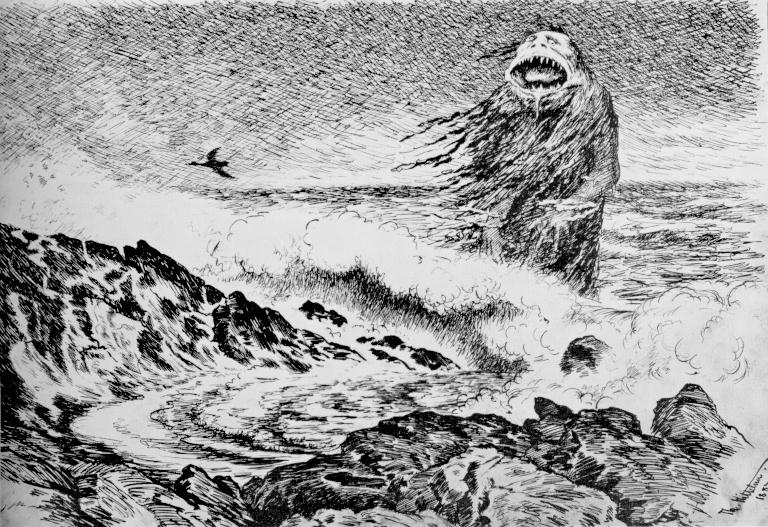
Gravemounds and haugbrott
In folktales, many draugr have some type of connection to burial mounds. They are deceased loved ones who come back to life in their graves or tombs, with the primary purpose of protecting the treasures that they were buried with. They are a type of revenant in a physical body, as opposed to something more ethereal like a ghost, and can put up a fight if provoked.
But who would ever provoke a revenant? you might ask. Well, that depends on what prize might be at stake.
Haugbrott is the Norwegian word translating into “mound breaking”, and describes the act of breaking and entering into a grave, often desecrating it in the process (though a current theory suggests sometimes it was actually socially-sanctioned). Haugbrott are a common occurrence in relation to mounds, with a majority of grave mounds showing evidence of some type of break-in. There is also evidence of mounds without graves (cenotaphs) having been reopened in a similar manner. There is no general consensus between archaeologists and historians as to why haugbrott were committed but there are several theories. There are, however, historical accounts of them occurring in the form of sagas and legends, they do not explain why they happened.
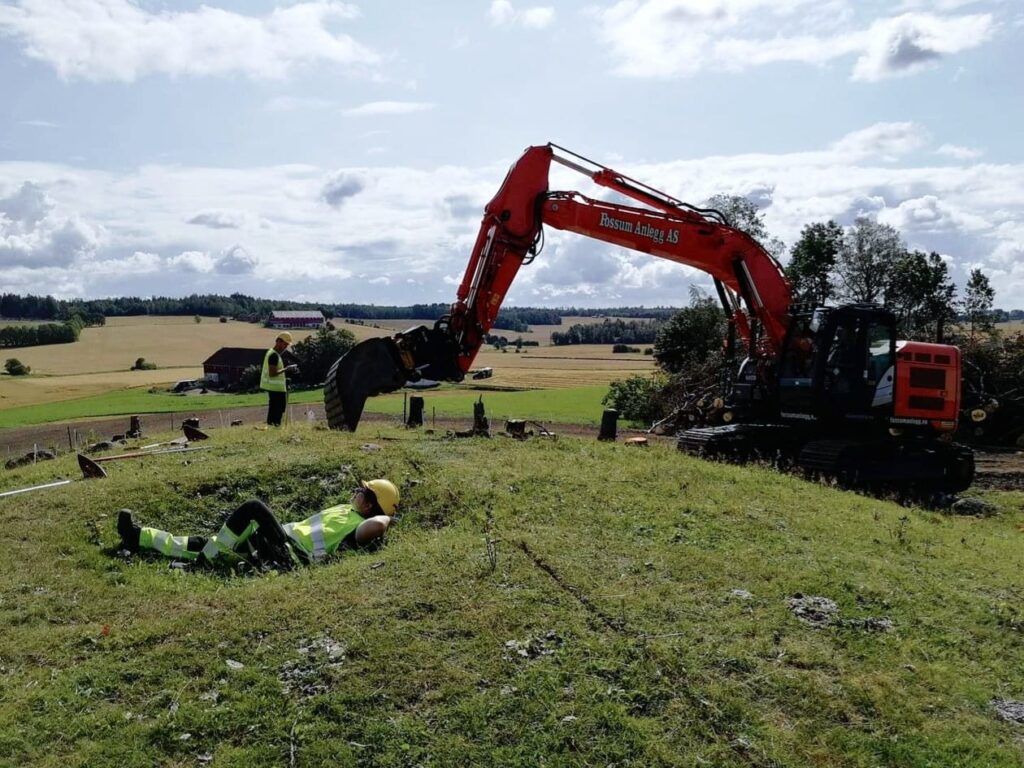
One such account is Grettir’s Saga, written down in the 14th century, tells the story of Grettir Ásmundarson, an Icelandic outlaw living in the 11th century. The stories are written down as real events, although the authenticity can be discussed. Grettir is no stranger to haugbrott, and commits several himself. A good example is the mound belonging to Kárr inn gamli (Kar the Old), the father of a chieftan in Møre and Romsdal, Norway. Grettir decides to break into the mound in order to get his hands on the old man’s treasures, and it is in here that he has to get through his very first battle with a draugr. Kárr has become a living dead man, jealously guarding his own mound and all of its treasure. But Grettir wins the battle, and he walks away with some of the deposited treasure, including an heirloom sword called Kárs-nautr (“Karr’s gift”).
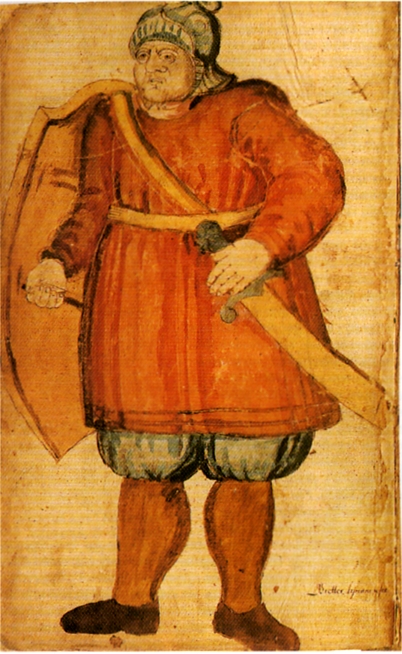
The Haugbrott could occur near the time of the creation of the mound, while others happened hundreds of years after the fact, and many others in-between. The most general theories and likely reasons behind Haugbrott have been summarized as the following:
- Grave robberies in search of gold and treasures.
- Collecting symbolic objects and heirlooms.
- Socially-sanctioned, funerary ritual purposes.
- Remove the dead to be re-buried somewere else.
- Preventing the dead from returning: the Reimleik motive.
Robbing a grave in search of gold is self-explanatory and has occurred world-wide. A famous example is the plunder of Egyptian tombs and pyramids, often shortly after the royal crypt has been finished and the dead placed in their eternal home. Mounds, like pyramids, are easy to spot, and known in their own time to often contain treasure—even if it was considered sacrilegious, there would likely have been people desperate enough to commit such an act to get their hands on it.
Collecting heirlooms from a mound may have been seen as a way of gaining the power of the dead person, and this is seen in particular in the Middle Ages, where this was a common belief. We also have examples from sagas of weapons acquired from mounds gaining powers from the dead. This ties in part in with the ritualistic aspect, but another possibility of committing haugbrott would be to take the power away from the dead. The people buried inside of mounds would have been incredibly powerful while alive, and perhaps destroying their final resting place was a way of taking away some of their power.
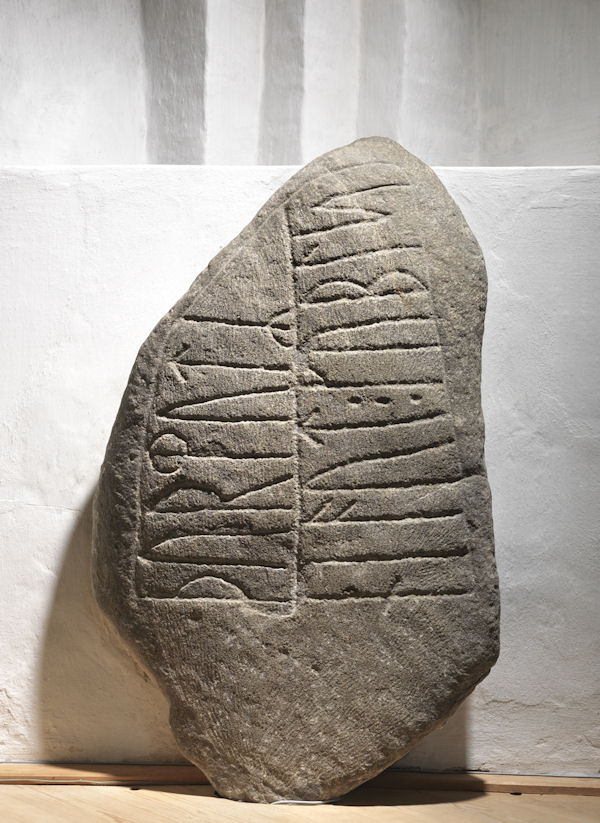
There are many examples from different cultures in which the partial goals of a burial is to keep the dead in their grave, and prevent them from coming back to life. There are burials in Finland and Poland where the dead have been placed with heavy boulders, or penetrated with wooden stakes (often, though mistakenly, referred to as vampire burials). This is refered to as the “Reimleik motive” when discussing haugbrott, and could be a possible reason for why these mound break-ins may have occurred so frequently.
The Draugr
The role of the draugr in the tales of haugbrott is interesting and can be interpreted in many ways. They may be interpreted as a cautionary tale to prevent people from breaking into and stealing objects from the mounds. They are often described as protectors of the mound when they are in the context of burials. But draugr appear in many other contexts as well, as far more hostile, and out for blood.
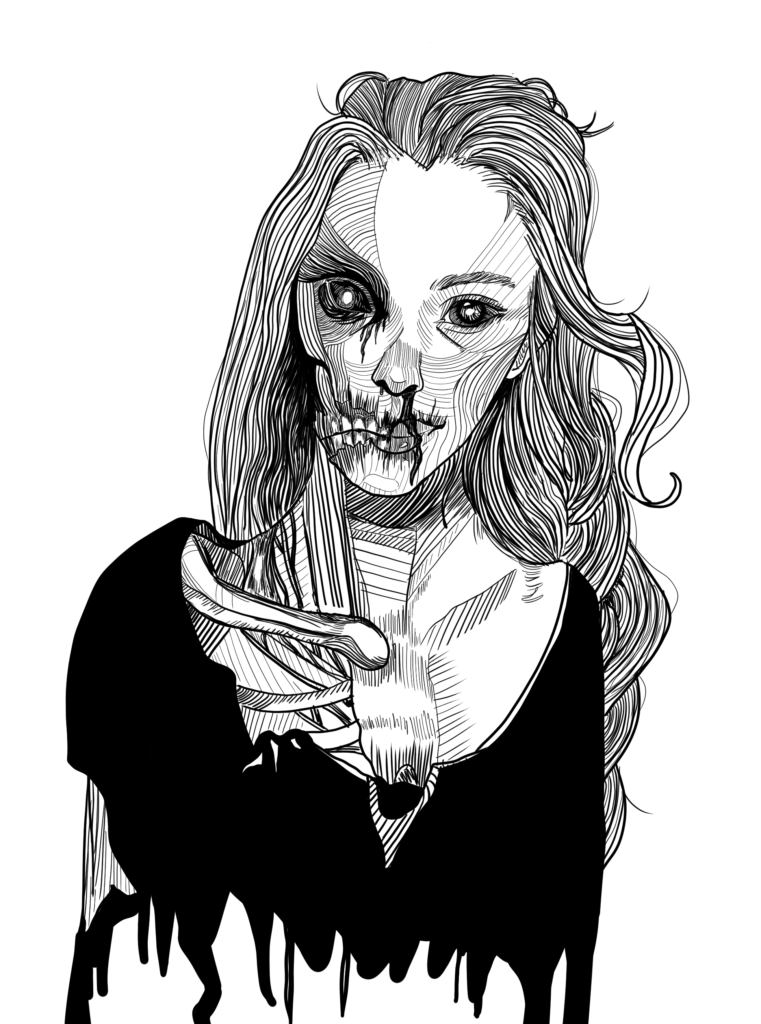
Perhaps the most well-known and terrifying example of a draugr is that of Glámr. He is mentioned in Grettir’s Saga, and though not explicitly mentioned as a draugr in the text (only called a “troll”), he plays the part all too well. Glámr is a Swedish woodcutter who is asked to watch the sheep for a farmer named Thorhall on his farmstead. Glámr is the only one in the area willing to do the job, because the farmer’s sheep were haunted. To make a bad situation worse, Glámr decides to not take part in the traditional yuletide fast, out of lack of belief, hunger, or sheer stubbornness.
There was a church near the byre, but Glámr never crossed the threshold; he hated psalmody; apparently, he was an indifferent Christian. On the vigil of the Nativity Glámr rose early and shouted for meat.
“Meat!” exclaimed the housewife; “no man calling himself a Christian touches flesh today. Tomorrow is the holy Christmas Day, and this is a fast.”
“All superstition!” roared Glámr. “As far as I can see, men are no better now than they were in the bonny heathen time. Bring me meat and make no more ado about it.”
“You may be quite certain,” protested the good wife, “if Church rule be not kept, ill-luck will follow.” Glámr ground his teeth and clenched his hands.
“Meat! I will have meat, or —” In fear and trembling the poor woman obeyed.
Grettir’s Saga 32 to 33, translated by Sabine Baring-Gould.
The following day, Glámr does not return from his work, and a group of people decide to try and find him, and in the end, they are successful.
Presently the whole party were called together about a trampled spot in the heath, where evidently a death-struggle had taken place, for earth and stone were tossed about, and the snow was blotched with large splashes of blood. A gory track led up the mountain, and the farm-servants were following it, when a cry, almost of agony, from one of the lads, made them turn. In looking behind a rock, the boy had come upon the corpse of the shepherd; it was livid and swollen to the size of a bullock. It lay on its back with the arms extended. The snow had been scrabbled up by the puffed hands in the death-agony, and the staring glassy eyes gazed out of the ashen-grey, upturned face into the vaporous canopy overhead. From the purple lips lolled the tongue, which in the last throes had been bitten through by the white fangs, and a discolored stream which had flowed from it was now an icicle.
Grettir’s Saga 33, translated by Sabine Baring-Gould.
The following night, Glámr comes back and begins to kill the living things around him. We learn that those slain by draugr are forced to reawaken as a draugr themselves, and this is likely what happened to poor Glámr.
Glam [Glámr] began afresh to wax mighty; and such deeds he wrought, that all men fled away from Thorhall-stead, except the goodman and his goodwife. (…) Now after midwinter one morning the housewife fared to the byre to milk the cows after the wonted time; by then was it broad daylight, for none other than the neatherd would trust themselves out before day; but he went out at dawn. She heard great cracking in the byre, with bellowing and roaring; she ran back crying out, and said she knew not what uncouth things were going on in the byre. The bonder went out and came to the cows, which were goring one another; so he thought it not good to go in there, but went in to the hay-barn. There he saw where lay the neatherd and had his head in one boose and his feet in the other; and he cast on his back. The bonder went up to him, and felt him all over with his hand, and finds soon that he was dead, and the spine of him broken asunder; it had been broken over the raised stone-edge of a boose. Now the goodman thought there was no abiding there longer; so he fled away from the farm with all that he might take away; but all such live stock as was left behind Glam killed, and then he fared all over the valley and destroyed farms. But Thorhall was with his friends the rest of the winter.
Excerpt from Grettir’s Saga 33, translated by Eirík Magnússon and William Morris, 1869.
Glámr is later slain by Grettir after an epic battle, but Grettir ends up paying a price that is higher than what he had expected. He has been cursed, and suddenly becomes catastrophically unlucky, doomed to loneliness, and afraid of the dark.
The eyes of the corpse were fixed on (Grettir), lit with the cold glare of the moon. His head swam as his heart sent a hot stream to his brain. Then a voice from the grey lips said—
“Thou hast acted madly in seeking to match thyself with me. Now learn that henceforth ill-luck shall constantly attend thee; that thy strength shall never exceed what it now is, and that by night these eyes of mine shall stare at thee through the darkness till thy dying day, so that for very horror thou shalt not endure to be alone.”
What Glámr had predicted came to pass. Never again did Grettir dare to be alone in the dark.
Grettir’s Saga 35, translated by Sabine Baring-Gould.
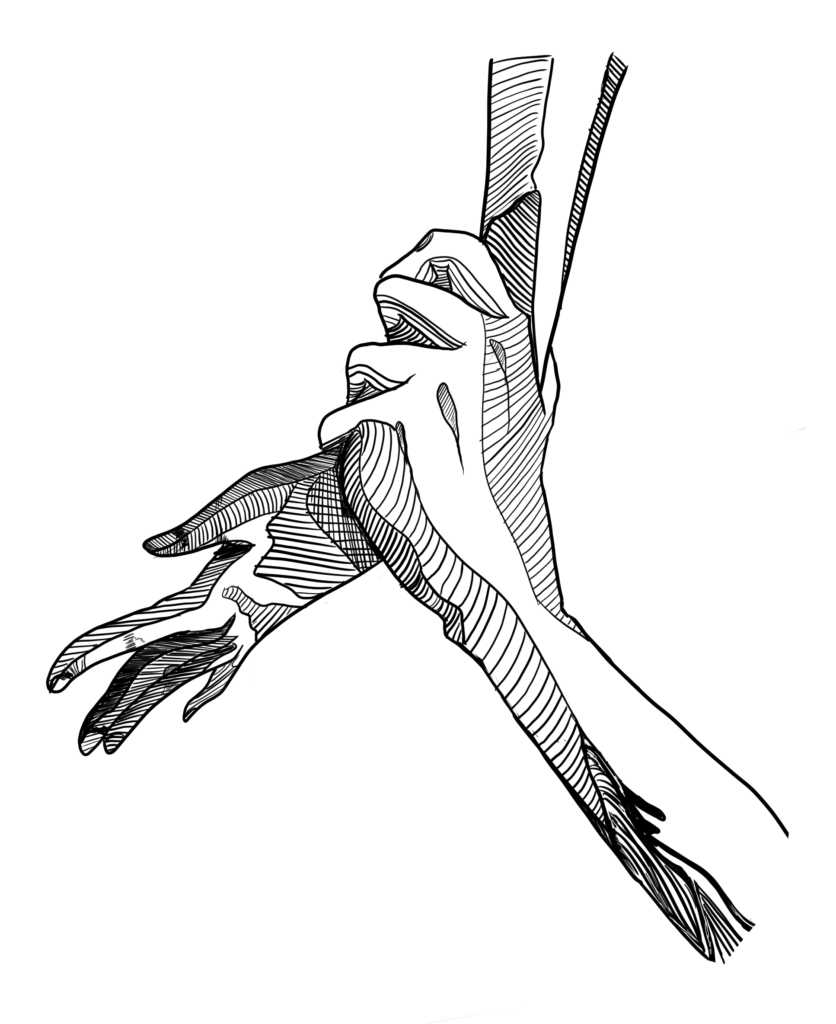
With this story, we see the draugr play a very different role to that of a protector for a mound. He is vengeful, brutal, and out for blood. Which version best represented the supernatural being is difficult to say, but it is easy to imagine which version scared people more.
Text: Molly Wadstål. Copyright 2021 Scandinavian Archaeology.
Photographs: Live Forsetløkken and Nationalmuseet in Denmark.
Illustrations: Theodor Kittelsen and Molly Wadstål (Wadstål Copyright 2021 Scandinavian Archaeology).
Special thanks to Mattis Huseth, archaeologist, for providing sources and insight on the topic of haugbrott.
Further reading:
Grettes-saga, 2014, in Islendingesagaene. Samtlige sagaer og førtini tætter. Translated by Kjell Arild Pollestad. Saga Forlag.
Connectedness with things. Animated objects of Viking Age Scandinavia and early medieval Europe, by Julie Lund, 2017.
Haugbrott eller gravplyndring i tidlig kristningstid? by Bjørn Myhre, in Fra hammer til kors, 1000 år med kristendom, brytningstid i Viken, by JaN Ingar Hansen and Knut G. Bjerva (ed).
Olav Tryggvasons saga by Snorri Sturluson.
About the author

Molly Wadstål
Archaeologist with a passion for archaeometry. I finished my bachelor’s degree in Norway at the University of Oslo, and also studied at Stockholm University to become an osteologist (bone specialist). I finished my master’s thesis in the Spring of 2021, in which I analyzed animal remains from the Viking town of Birka. I am currently working as a field archaeologist here in Norway.
My focus areas thus far have been on the later parts of the Iron Ages, specifically Birka and the Sandby hillfort. I am also very passionate about the Stone Age (in particular the Paleolithic and Mesolithic), and I am the happiest when I am simply working with archaeology, regardless of era. I am also very passionate about Archaeological science, particularly studies around bone.
As Junior editor and Illustrator, my work here at Scandinavian archaeology is to write articles, and to do more hands-on administrator work. A large part of the illustrations here on our website are made by yours truly.
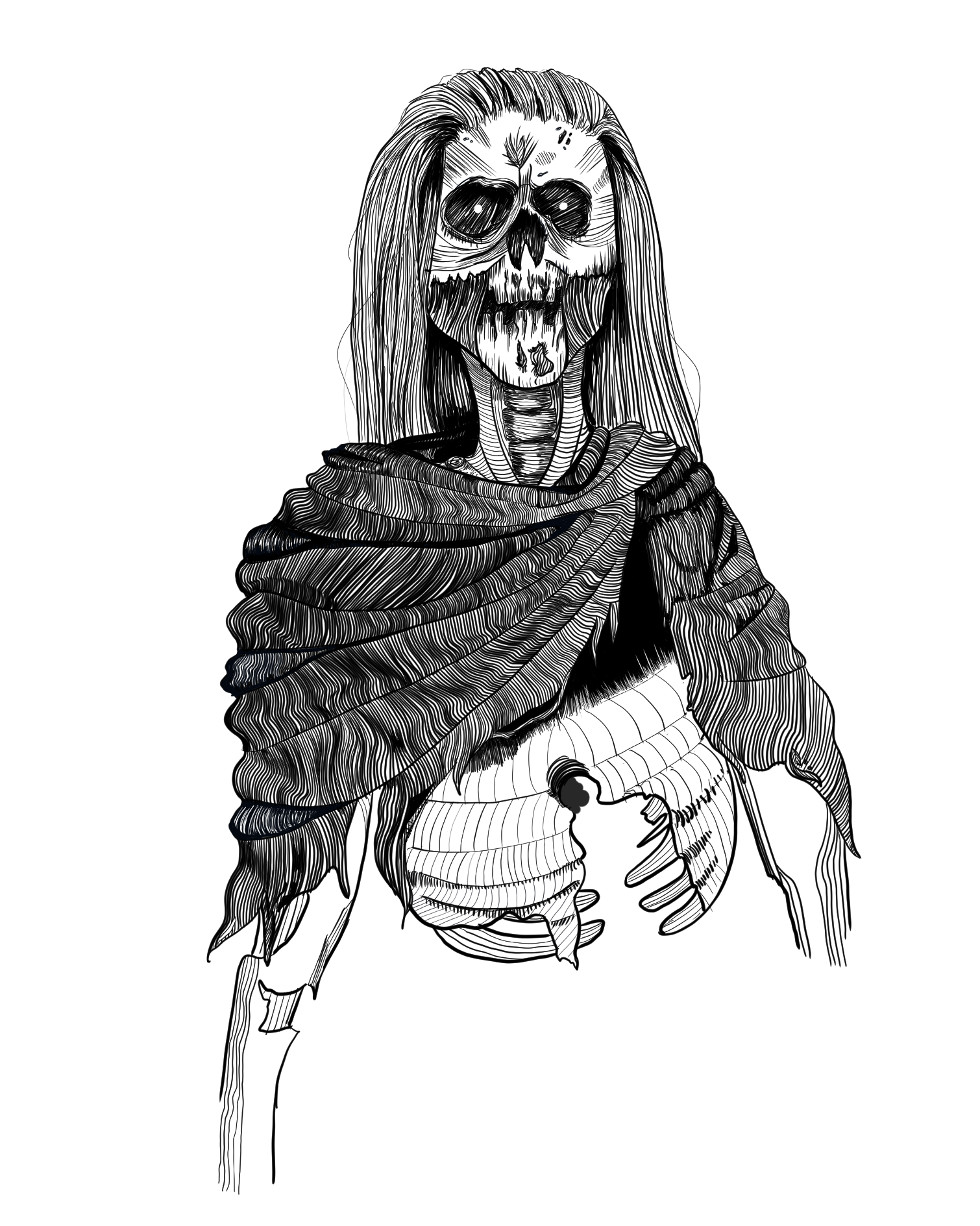
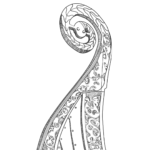
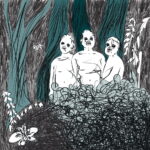
[1] Often the draugr is regarded not so much as a ghost but a revenant, [2] i.e., the reanimated of the deceased inside the burial mound [3] as in the example of Kárr inn gamli in Grettis saga.